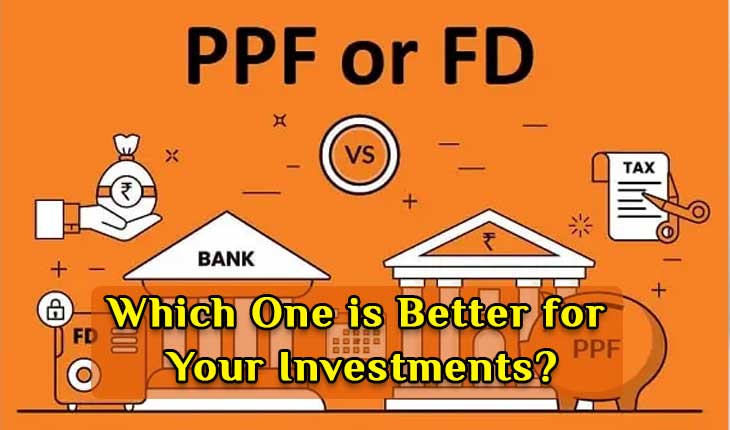When it comes to investing, there are several options available in the market, but two of the most popular ones are Public Provident Fund (PPF) and Fixed Deposit (FD). Both PPF and FD are popular investment options in India that offer a guaranteed return on investment. However, before investing in either of these, it is important to understand their features, benefits, and drawbacks to make an informed decision. In this article, we will discuss PPF vs. FD, and which one is better for your investments.
Table of Contents
Understanding PPF
Description: Public Provident Fund (PPF) is a government-backed savings scheme that offers a tax-free return on investment. PPF has a lock-in period of 15 years, and the minimum investment amount is Rs. 500 per year, while the maximum investment limit is Rs. 1.5 lakhs per year. The interest rate on PPF is revised every quarter and is currently at 7.1%.
Understanding FD
Description: A Fixed Deposit (FD) is a popular investment option offered by banks and financial institutions. FDs have a fixed tenure, and the interest rate is fixed at the time of investment. The tenure of an FD can range from 7 days to 10 years, and the interest rate varies depending on the tenure and the bank. FDs offer guaranteed returns, and the interest earned is taxable.
Comparing PPF and FD
Description: PPF and FD are both popular investment options, but they differ in terms of features, benefits, and drawbacks. Here’s a comparison of PPF vs. FD:
Returns: PPF offers a tax-free return on investment, which is currently at 7.1%. FD, on the other hand, offers guaranteed returns, but the interest earned is taxable.
Lock-in period: PPF has a lock-in period of 15 years, while the tenure of an FD can range from 7 days to 10 years.
Investment limit: The minimum investment amount for PPF is Rs. 500 per year, while there is no minimum investment limit for FD. However, the maximum investment limit for PPF is Rs. 1.5 lakhs per year, while there is no maximum limit for FD.
Liquidity: PPF has a lock-in period of 15 years, but partial withdrawals are allowed after completion of 5 years. FD, on the other hand, can be broken before maturity, but there may be a penalty for premature withdrawal.
Which one is better for your investments?
Description: Both PPF and FD have their own benefits and drawbacks, and the choice between the two depends on your investment goals, risk appetite, and financial needs. If you are looking for a long-term investment with tax benefits, PPF is a good option. However, if you want to earn higher returns on your investment and have short-term financial goals, FD may be a better option. Additionally, if you are looking for liquidity, FD may be a better option as it can be broken before maturity.
Conclusion:
In conclusion, PPF and FD are both popular investment options in India, and each has its own benefits and drawbacks. While PPF is a good option for long-term investments with tax benefits, FD is a better option for short-term investments with higher returns. It is important to evaluate your financial goals and risk appetite before making a decision between PPF and FD.

